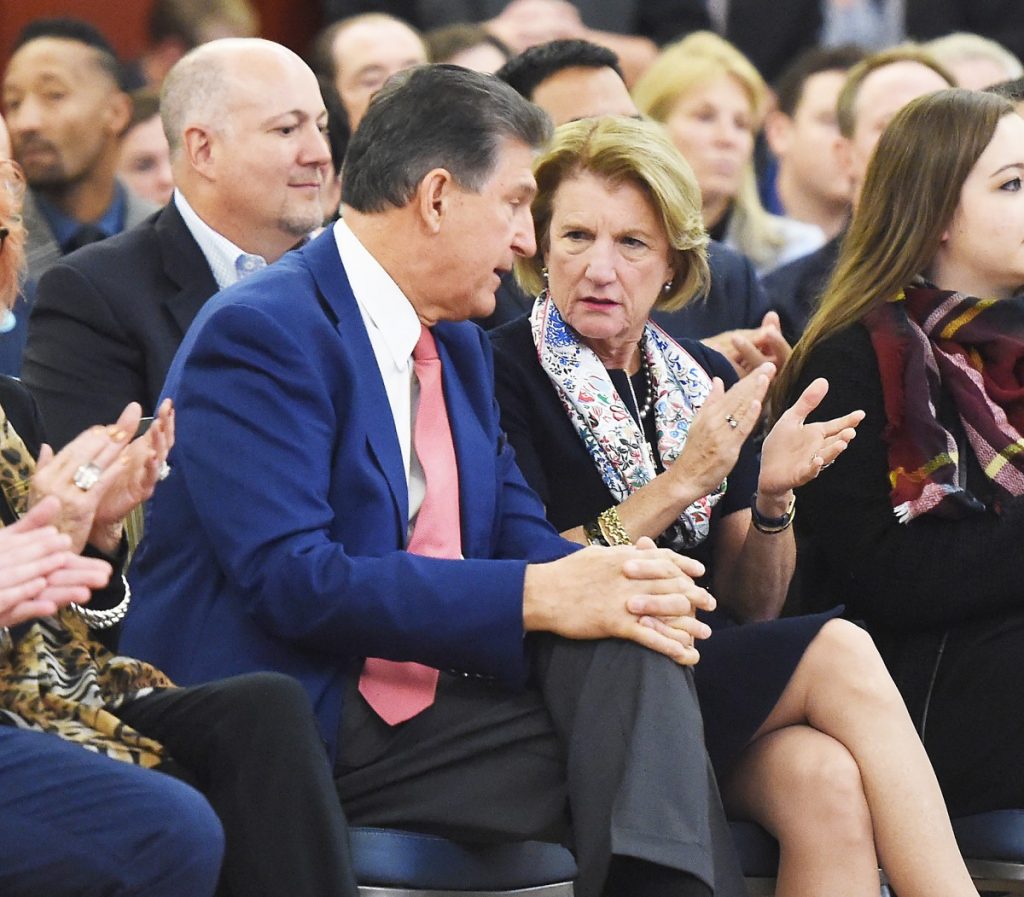MORGANTOWN — The U.S. Senate Appropriations Committee continued advancing Fiscal year 2020 funding bills to the full Senate on Thursday, all with unanimous votes. And Sens. Shelley Moore Capito and Joe Manchin – both members – have highlighted some measures of interest to West Virginia.
Chief among them is $100 million for the Appalachian Development Highway System (ADHS) and particularly $13.2 million to help finish Corridor H, which roughs roughly west-east from Elkins to Wardensville and the Virginia border.

In late July, Capito, Manchin and Maryland Sen. Chris Van Hollen co-authored a letter to committee leaders to include ADHS money in the Transportation, Housing and Urban Development – T-HUD – bill. The ADHS system, they said, was created in 1965 to better integrate Appalachia with mid-Atlantic, Southeast and Midwest regions.
Now, 90% ifs 3,090 miles is complete and the remaining 10% is the most difficult and expensive, but essential. States’ budget difficulties mean completing the last miles is decades away. But the Appalachian Regional Commission estimates completing the corridor will generate $8.7 billion per year in new revenue, 46,000 new jobs and $2.7 billion in new wages.
Manchin noted that this is the first dedicated funding for Corridor H through annual appropriations since 2012. “This funding will expand transportation across our state, boosting our economy through tourism and recreation.”
In West Virginia, Corridor H between Kerens and Davis is incomplete, along with the least stretch from Wardensville to Virginia.
T-HUD also includes $3.3 billion for the Community Development Block Grant program; funding for the Essential Air Service, Contract Towers, and Airport Improvement Grants; and $25 million under the SUPPORT ACT for grants to help communities assist individuals recovering from substance abuse.
Capito noted that she was a leader in enabling CDBG funds to be used for broadband deployment.
We saw real commonsense and compromise in committee today, and that’s the way this is supposed to work,” she said. “I hope that moving forward we can continue to adhere to the same spirit of bipartisanship that helped us reach a budget agreement in the first place and put policy above politics to finish this process.”
The Agriculture, Rural Development, Food and Drug Administration, and Related Agencies Appropriations Act includes: rural broadband development support through $64 million for Distance Learning /Telemedicine and Broadband grants; $1.45 billion for Rural Water and Waste Program loans; $75 million for the Food and Drug Administration, as authorized in the 21st Century Cures Act, to help stem the opioid crisis; and full funding for WIC and SNAP food programs.
The FY2020 Financial Services and General Government Appropriations Act includes: $280 million for the High Intensity Drug Trafficking Areas Program, qualifying designated areas for additional funding to combat the opioid crisis, along with $100 million for the Drug Free Communities Program, and $338 million for the Bureau of Fiscal Service in Parkersburg.
Capito pointed out that this summer’s bipartisan Budget Act of 2019 enabled Congress to set appropriations funding levels over the next two years and made it possible for the Senate Appropriations Committee to consider the bills undergoing markup and committee approval.
Four appropriations bills advanced by the committee last week are in temporary limbo, but still alive, Capito said. They are the Energy and Water Development Appropriations Act, which includes $800 million for fossil energy research, including NETL in Morgantown; the Department of Defense Appropriations Act; the State and Foreign Operations Appropriations Act; and the Labor, Health and Human Services Appropriations Act.
Capito said a procedural move to advance them for a full Senate vote failed, gaining a majority 51-44 vote, but not the full 60 votes to move forward. They will need a successful procedural vote to move forward.
As previously reported, the Senate will consider 12 appropriations bills all told. The House has already sent its bills to the Senate. Once the Senate completes its bills, they will head into the reconciliation process for compromise between the two chambers. The federal fiscal year starts Oct. 1, so it’s likely continuing resolutions will be needed for stopgap funding until the work is done.
Tweet David Beard @dbeardtdp Email dbeard@dominionpost.com




